Miniature Schnauzer: breed description, pros and cons, nature and content

Miniature Schnauzers are unique dogs. They very harmoniously combine compact size and excellent working qualities, which make it possible, without exaggeration, to consider the zwerg to be a real service breed. Unprecedented courage, prudence and firm self-confidence make this little pet a full-fledged guard and guard.
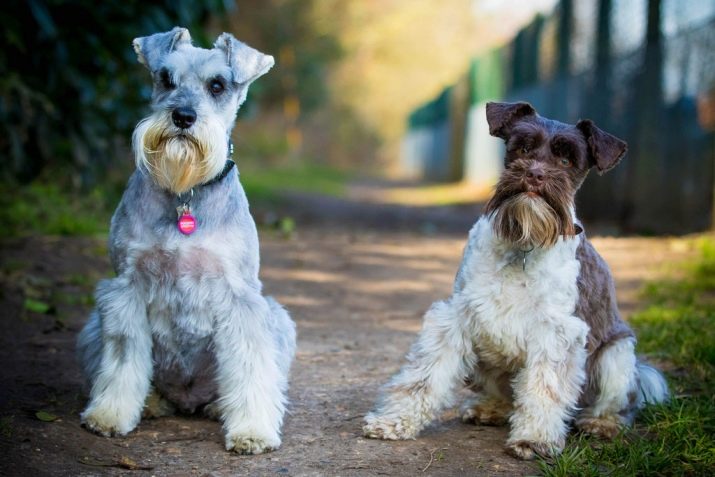
Origin story
The first mentions of the Miniature Schnauzer breed date back to the beginning of the 19th century. Dogs were quite common in Germany, where they were used to protect crops from rats, mice and other rodents. It is known for certain that the progenitors of the miniature schnauzers are not too large Schnauzers, which were knitted with pinschers, affenpinschers, poodles and spitz.
The main goal of the breeders was to create miniature dogs with a schnauzer temperament, suitable for living in small apartments and capable of making excellent companions. As a result of selection, a new breed was born, which immediately attracted the attention of European dog breeders.
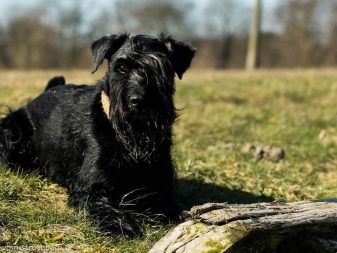
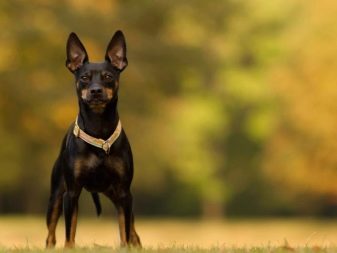
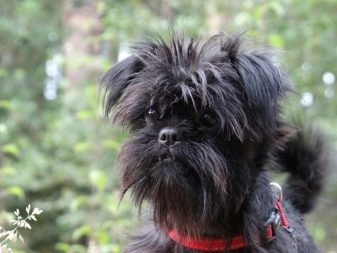
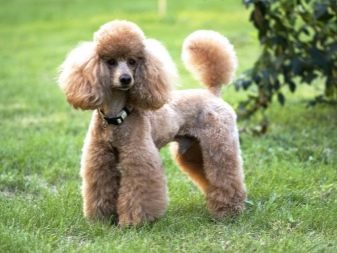
Towards the end of the century, namely in 1890, miniature schnauzers made their debut at a dog show, and in the same year the breed received its first standard.
5 years later, the first breed club was formed in Cologne, Germany, which, in addition to the Pinschers, included Schnauzers. Josef Bert was elected its chairman - the same German breeder who initiated and inspired the creation of a new breed. The first officially registered representative of zwergs was the male Zhokkio Full Lilliput, born in 1898.
In 1902, the club published the first Studbook, in which, along with the traditional pinschers and schnauzers, there were already 14 zwergs.
The new breed developed at a natural pace and was in high demand not only at home, but throughout Western Europe. By 1930, miniature schnauzers were already well known not only in the Old World, but also in Canada and the United States.
The first zwergs were brought to the Soviet Union from America in 1974, but they did not give an active impetus to the development of the breed and were kept as pets. A little later, in 1978, a whole "batch" of miniature schnauzers was donated to the Soviet border guards by their Czechoslovak colleagues, whose breed was in the border guard service.

The donated animals were housed in a Lviv nursery, from where they came first to Moscow and then to Leningrad cynologists. This contributed to the opening of the first breeding nursery in Moscow, which began its work in 1980. Today, miniature schnauzers occupy the seventh line in the popularity rating of breeds., playing the role of not only a pet, but also a service dog. Animals work at airports and customs, where they help to look for drugs, weapons and explosives.
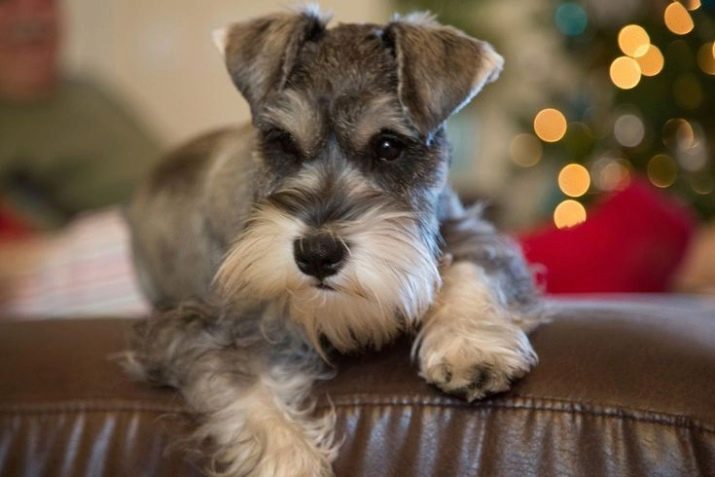
Description of the breed
The Miniature Schnauzer is a compact, muscular dog with a very coarse coat and an expressive muzzle. Frowning eyebrows and a neat beard give the pet a stern look, which, in combination with its diminutive size, causes a permanent smile.
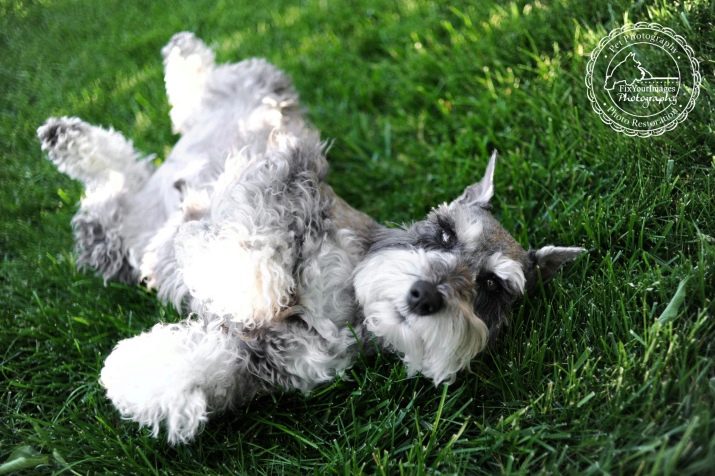
The description of the breed is as follows.
- Frame The Miniature Schnauzer has a high front part, due to which the line of the back from the withers to the tail is noticeably inclined. This posture is clearly visible even in one-month-old puppies and, along with the muzzle, is the calling card of the breed. Due to the inclined position of the body, the dog can develop high speed. The loins of the zwergs are rather short, giving the body a compact size and a square shape. The chest is powerful, forming an arched line when passing into the abdomen.
- Neck muscular, is of medium length and merges into the withers with a gentle curve.
- The head is proportional to the body and tapered from ears to nose. Skull rather strong, without occipital protuberance. The transition from a flat and smooth forehead to the nose is accentuated by expressive eyebrows. The muzzle has a somewhat blunt structure and is trimmed with a short mustache and beard. The nose is always black, the nostrils are wide, clearly visible.
- Lips as well as the nose, they have black pigmentation and fit snugly to the teeth. The teeth are white and strong, closing in a scissor bite. The jaws are powerful, the cheekbones are moderately developed.
- Ears have a V-shaped structure, a high fit and ends slightly bent towards the temples.
- Eyes small and oval, always dark in color.
- Front legs strong, well-muscled and elbows neither protruding nor protruding. The hind limbs are set obliquely from the side view, which gives the posture a swift look. The hock joint is strong, well developed, the feet are round with short black nails.
- Tail has a high waist and looks up. According to the latest rules, it is not docked, however, owners of dogs who do not take part in exhibitions continue to do this for greater convenience.
- Wool It is characterized by high rigidity and density, and resembles wire to the touch. The undercoat is also very dense, quite close to the body.
As for the color, the old standard, which was in force until 1976, provided only two options: black and "pepper and salt". However, since 1977 Germany initiated the recognition of another color - black and silver, which later became the most popular. Further, in 1992, the white color was approved, and in 2006 - the chocolate-tan color. True, the latter was recognized only by the Russian Cynological Federation unilaterally, the federations of other countries have not yet done this.
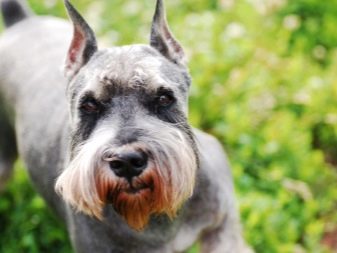
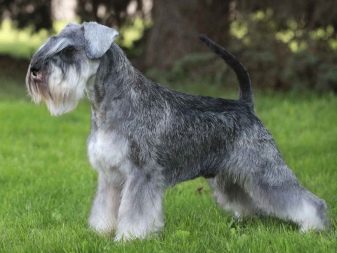
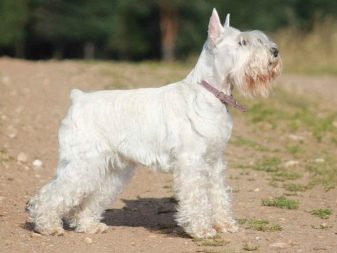
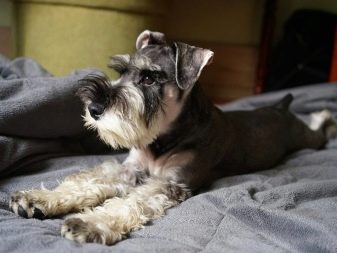
However, the characterization of miniature schnauzers would be incomplete without considering the shortcomings and vices. Thus, a round and massive skull, the presence of skin folds on the body, a pointed or too elongated muzzle and a long curved back can lead to a decrease in the rating at an exhibition. Disqualification threatens the animal for behavioral abnormalities, such as excessive cowardice or excessive aggressiveness, as well as for an incorrect bite, deviations from the growth rate in one direction or another and an unacceptable color.
Character
The Miniature Schnauzer is the smallest breed of service dogs that, if necessary, can stand up for their owner and for his property. However, a distinctive feature of miniatures is the lack of inclination to make independent decisions, as is the case with many guard dogs. The pet will not rush at the intruder without the owner's command and will not show aggression towards uninvited guests.
Like any other service dog, the miniature needs an owner with a strong character, in which he can see his leader.
Despite their small size, miniature schnauzers are brave dogs, selflessly loyal to their owner. Their gaze from under their stern eyebrows is always full of determination and straightforwardness. However, at home, the zwerg is not averse to flocking to the household, playing with small children. Behind the harsh appearance of this desperate mini-guard is a gentle and deeply loving nature for his family.
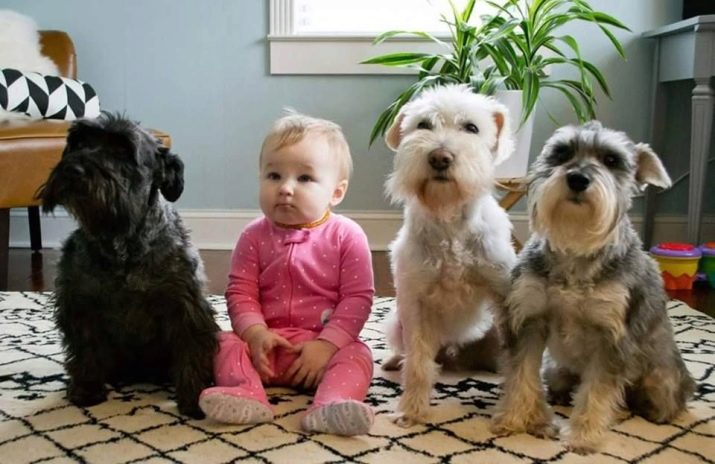
Zwergs get along well with other dogs living with them under the same roof, and are indifferent to cats. Due to their high mobility, they are ideal for people with an active lifestyle. The dog will become an excellent companion on a morning run, will be happy to make a company on a bike ride and will happily go on a hike.
Dogs are well suited for families with children: they are able to tirelessly play with the child and endure his obsessive amusements for hours. However, a dwarf schnauzer is not suitable for a too busy person: the animal really needs love and communication with the owner, it does not tolerate the lack of attention and care.
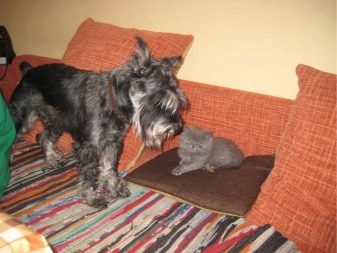
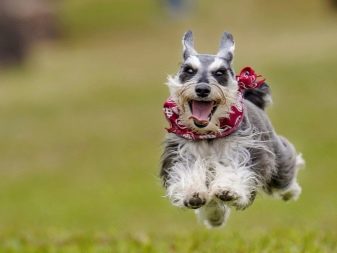
Miniature Schnauzers are small dogs with a serious disposition and excellent physical characteristics. They have a stable nervous system, lightning-fast reaction, resourcefulness, sometimes turning into cunning, distrust of strangers and high vigilance. The guarding qualities of the miniatures are manifested from an early puppy age, which makes the dog very funny and courageous at the same time.
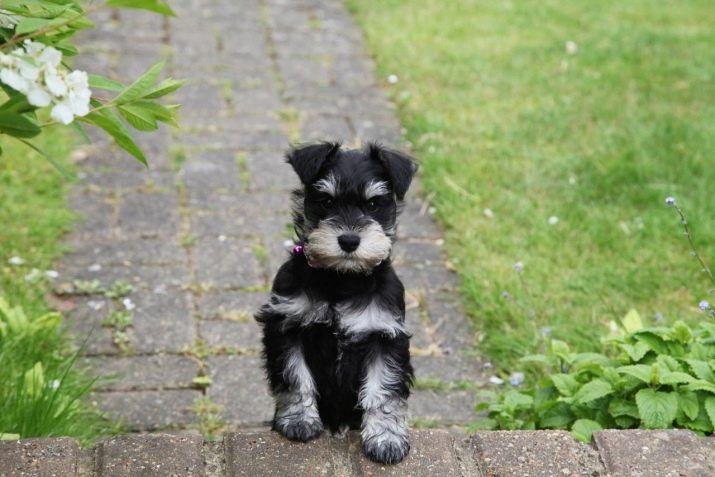
Pros and cons of dogs
High popularity of miniature schnauzers and high demand for puppies due to a number of indisputable merits of these selfless and intelligent dogs.
- Miniatures are considered excellent companions., they are able to brighten up the everyday life of a lonely person. Once in a large family, the dog will also feel great, adoring each of the household and without hesitation standing up to protect them.
- Thanks to the compact build of Miniature Schnauzers convenient to keep in a city apartment.Moreover, the size of the animal allows you to take it with you on long trips and on vacation.
- Miniatures are full-fledged service dogs, therefore easy to learn and good command execution.
- Dogs are very active and love to move. which is especially valuable for lovers of cycling and jogging.
- Despite the serious appearance, dogs have a sense of humor, and in difficult moments of the owner's life they know how to empathize.
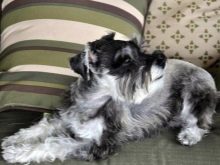

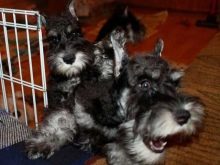
The disadvantages of the breed include, first of all, difficulties in grooming the coat.... Miniatures need regular groomer services, for which you will have to pay a round sum each time. In addition, untrained dogs can be stubborn and aggressive towards other animals.
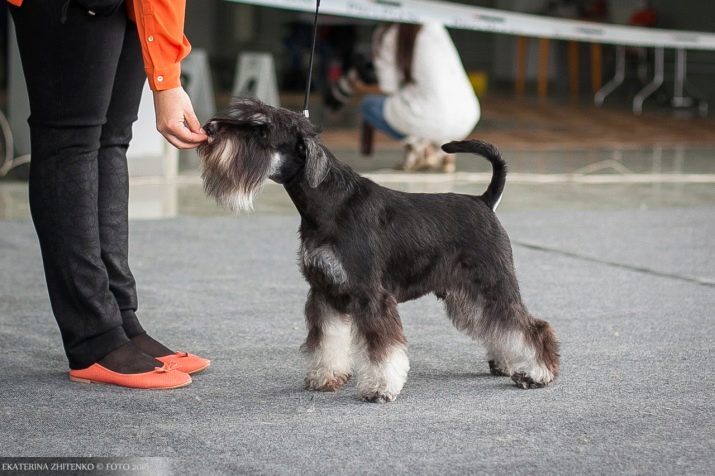
Life span
Miniature schnauzers are distinguished by excellent health and, on average, live for 12-14 years, and with unburdened heredity and competent care, they often live up to 16. The most common ailments that zwergs suffer from are eye diseases such as cataracts and glaucoma. However, it is worth noting that mainly aged individuals are susceptible to diseases, while young people have strong immunity and are very rarely sick.
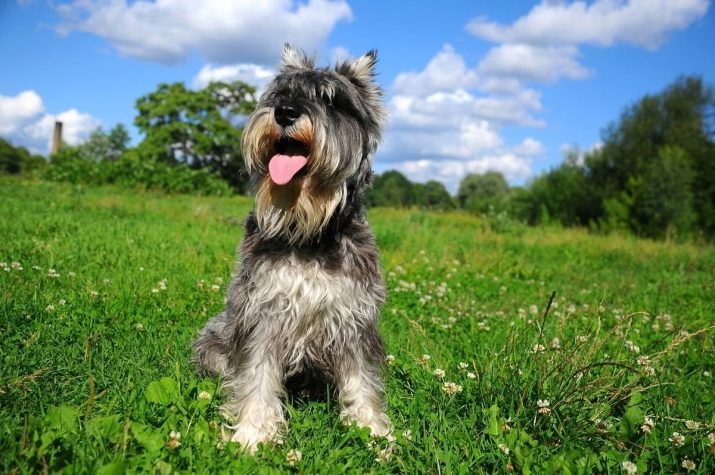
Occasionally, zwergs also experience allergic reactions, mainly associated with an improperly selected diet and feeding the dog from the table.
And also among the pathologies, inflammatory skin diseases and its tendency to neoplasms can be noted. Skin diseases entail complete loss of hair in the affected areas with the appearance of bald patches and acne. An exacerbation of such diseases is often provoked by trimming, therefore, the procedure should be performed with strict observance of sanitary standards, entrusting the animal only to an experienced specialist.

In addition, injuries can be attributed to the most common health problems, since, due to their "reactivity", miniatures often cut and injure limbs. For the rest, these are healthy and agile dogs, which, with proper care, do not cause trouble for their owners and live to old years. The main thing – it is to closely monitor the health of the dog, to carry out the necessary vaccinations on time and to contact the veterinarian in time.

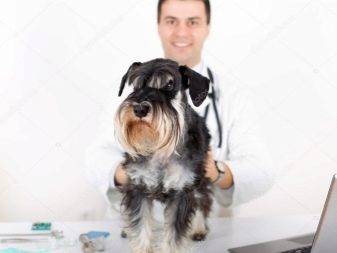
How to choose a puppy?
It is advisable to purchase a puppy from trusted breeders or in a kennel, since buying an animal "off hand" cannot fully guarantee the presence of all breed characteristics in a dog, from the exterior to the behavior. Moreover, the nursery confirms the puppy's purebredity with documents, gives him a puppy card and a veterinary passport with marks on calendar vaccinations... Miniatures start selling when they reach 1.5-2 months, but if you need to buy a show puppy, it is better to wait a little and get a grown-up pet at the age of 6 months.
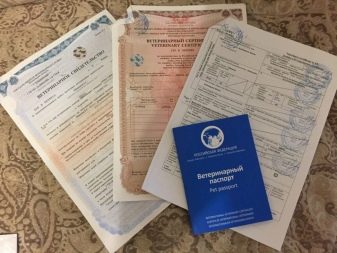
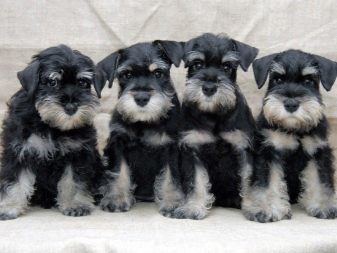
By this time, all breed characteristics are visible in the dog and the exterior is practically formed.
The first thing to look for when buying is the puppy's appearance. The kid should be well-fed and active, with a shiny coat and clean eyes.
Next, you need to gently feel the pet and make sure there are no tumors, not paying attention to the bulge between the shoulder blades. This is a normal reaction of the body to vaccination, so there is no need to worry about this. Then you need to evaluate the behavior of the puppy.: a healthy baby will have fun playing with his brothers and will not show any aggression towards a stranger.
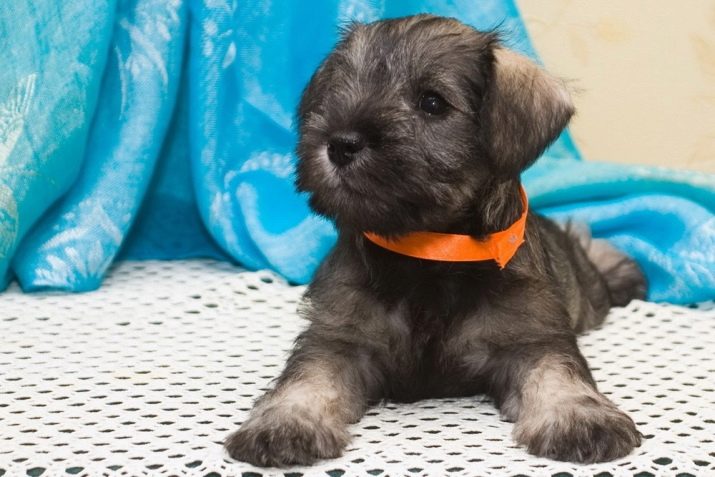
However, small fights with other puppies are the norm, especially in males.
It is also advisable to look at the parents of the pet and observe their behavior. An adult zwerg should be energetic and vigilant, so a formidable roar or barking towards the buyer is quite normal. Then you need to try to make contact with the baby and make sure that the puppy shows interest, does not grin and, despite the breed distrust, is ready to communicate.
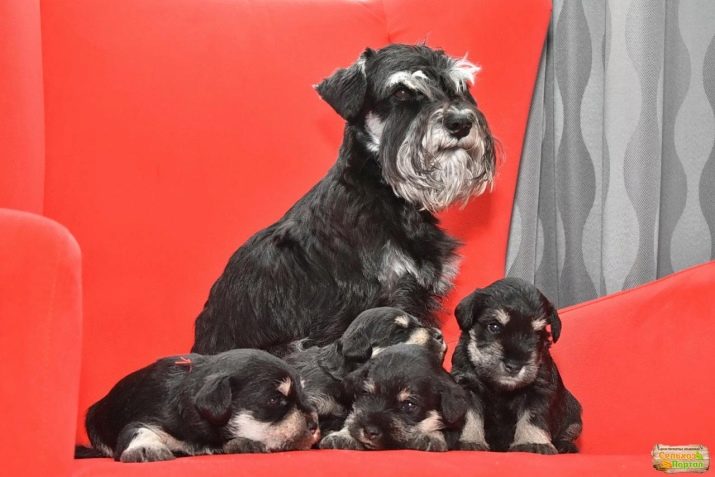
After the choice is made, it is advisable to familiarize yourself with the documents of the parents, as well as check the presence of a veterinary passport with vaccination marks from the puppy himself. When buying a zwerg, you should remember that the price of a purebred puppy cannot be lower than 18,000 rubles. Parents of such a baby usually have “good” and “very good” grades, and there are no champions among the closest ancestors.
If the parents are more titled, then the average cost of puppies is from 25,000 to 38,000 rubles, and depends on the number of regalia and "citizenship" of the ancestors. However, you should not flatter yourself with such an expensive purchase, since children of the most eminent champions often fail to gain recognition in the ring.
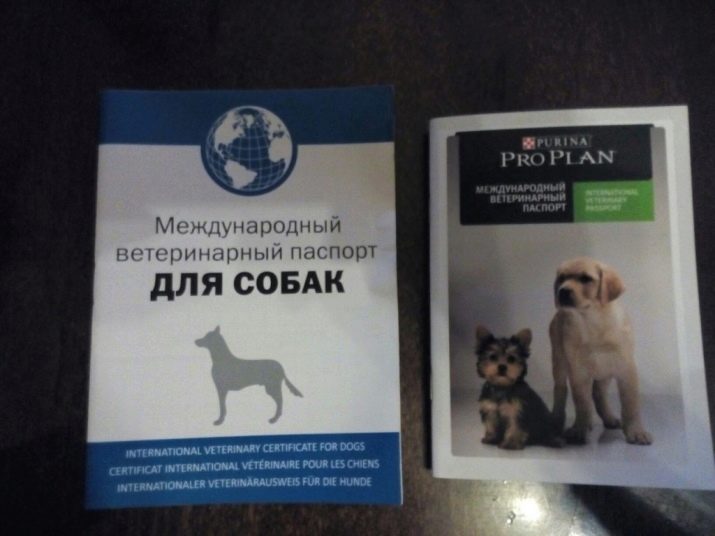
But such a puppy will carry all the best signs of the breed and every day to demonstrate its dignity to the owners.
If the dog is bought, as the dog breeders say, "on the sofa", then you can limit yourself to buying a puppy for 10,000 rubles. Such prices are often set by nurseries, offering for them small zwergs that do not meet the standard. Defects may include overshot or undershot, tall or dwarfed and color mismatched.
In the documents of such babies, the mark "not for breeding" is necessarily put, which prevents the further birth of puppies with defects and prevents the consolidation of breed anomalies. And the last tip: not worth buying an adult miniature schnauzer, since its adaptation to a new home and new faces is rather difficult, and there is a possibility that the dog will not recognize the real owner in the new owner.
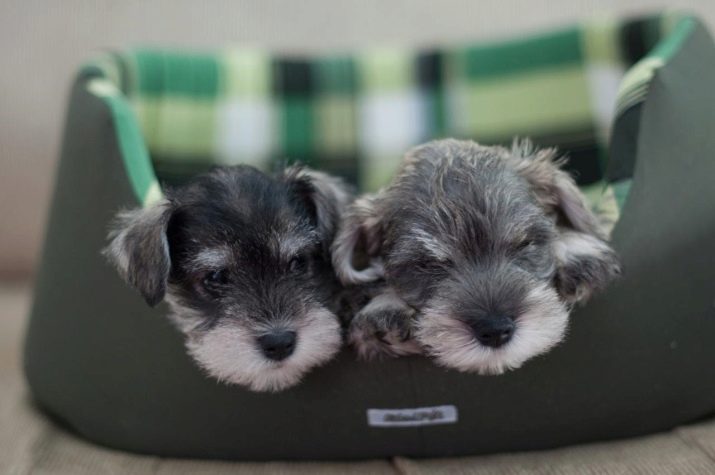
Maintenance and care
Miniature Schnauzers are designed for home keeping and are ideal for small apartments. However, such pets do not belong to the category of exclusively "apartment" dogs: they will not go to the litter box and cannot bear the absence of walks. Moreover, the zwerg is a dog of active owners, so you cannot give such a dog to an elderly person... The dog should receive a large "portion" of physical activity every day, otherwise it will spend its energy on the home.
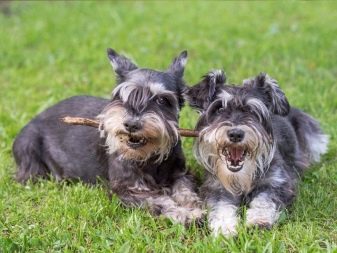
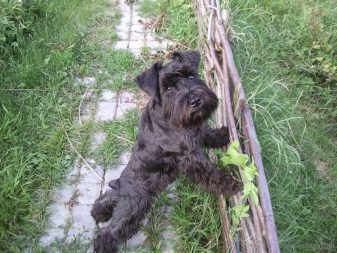
By the way, complaints about damage to property are very common among the owners of miniatures, and more often they are explained by the banal lack of time of the owners for full walks with the dog.
In order to avoid irreparable consequences, it is necessary to remove bottles with household chemicals, flower pots, decorative interior items and shoes from the reach of the animal in advance. In addition, you should lift up the network cables, extension cords and, if possible, move the wiring. The best option would be to restrict the freedom of movement of the zwerg to one room., tightly closing the doors to other rooms of the apartment.
Teenage puppies are already quite agile and quick-witted, so the dog has nothing to do in the kitchen either. Otherwise, the little zwerg will easily jump onto a stool, climb from it onto the table and eat the products recklessly forgotten by the owners. Therefore, you should take care of limiting the movement of the pet in its absence in advance.
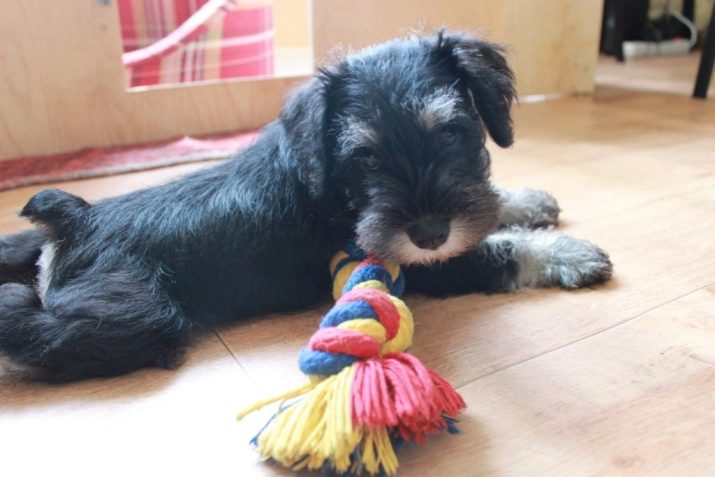
As for caring for a pet, the main component is grooming the coat. This is due to the rigid structure of the hair and its long length, leading to rapid rolling into tangles. If you do not take care of the hair of a zwerg, the matted hair will tighten the skin and, as a result, cause its inflammation. To prevent this from happening, puppies from 3-4 months of age are taught to regularly comb, which is performed with a soft brush 2-3 times a week.
From about the same age, miniatures are taught to washing the beard... To do this, first use wet wipes and after the baby gets used to it, wash the beard with warm water and wipe it dry with a soft cloth.
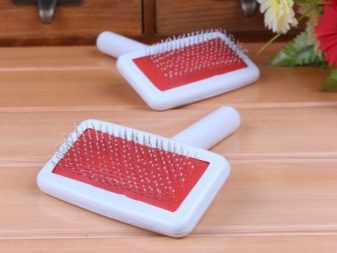
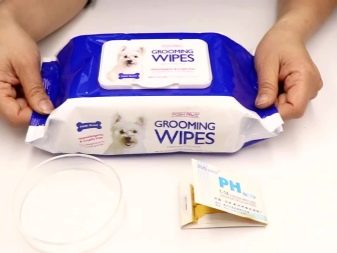
Adult zwergs are combed a couple of times a week, pre-moistening the wool with conditioner, balm or spray.
Miniature schnauzers are bathed no more than 2-3 times a year, and their paws, chest, beard and lower abdomen are washed every week using special shampoos for wire-haired dogs. For this, the pet is placed in a bathtub on a rubber mat and washed with water at a temperature of 38-39 degrees with the help of a shower.
Then the dog is thoroughly soaked with several dry towels, slightly dried and combed. It is advisable that the miniature schnauzer dries naturally, since frequent use of a hair dryer often leads to dryness of the skin and makes it vulnerable to all sorts of inflammations.
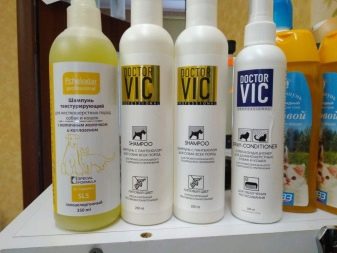
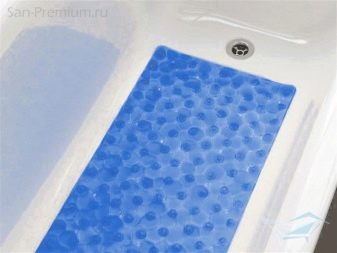
Miniatures need regular plucking of dead hair - trimming. The need for the procedure is due to the fact that the old wool does not fall out and does not allow new ones to grow. The first trimming is performed after the dog's teeth change and continues throughout the pet's life with regularity once every 3 months. Plucking can be done either manually or with tools such as a stripper and trimmer.
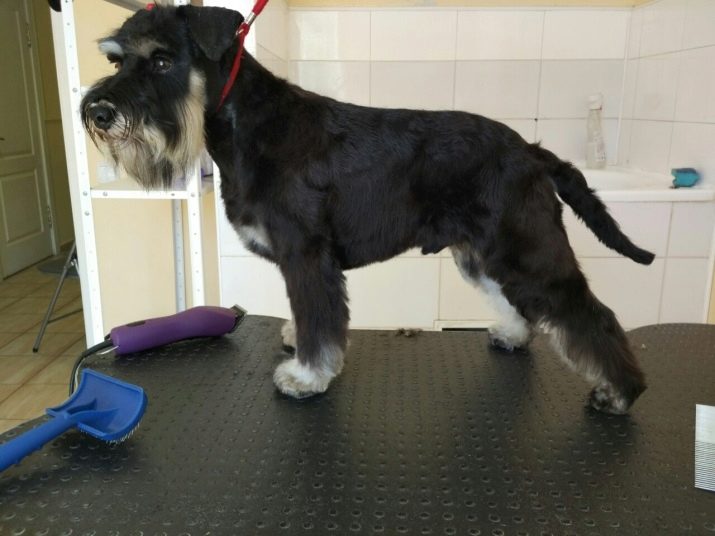
However, around the ears and in the throat area, the hair is plucked only with the hands and very carefully.
It should be understood that trimming is a very time-consuming and lengthy procedure, for which it is advisable to free up the whole day, since even professional groomers spend at least 5 hours on it. If trimming is performed independently, then from time to time the dog needs to be released to rest: the animal should be able to warm up, drink and, if necessary, go to the toilet. It is also allowed to split the procedure into two days. In winter, for the first couple of weeks after trimming, you need to wear overalls or other warm clothing for walks.
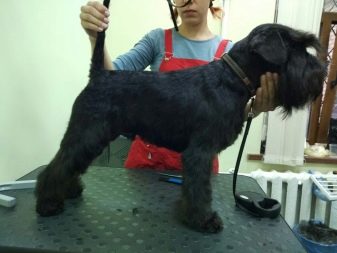
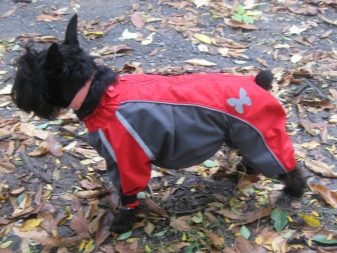
However, this is not all. Approximately once every 1.5 months, the miniature schnauzer should undergo a hygienic shearing, during which the animal's eyebrows and beard are shortened, and the grown hairs on the pads and around the anus are cut off. Show zwergs are trimmed and trimmed only by experienced groomers, since many nuances, including color, influence the cutting technique.
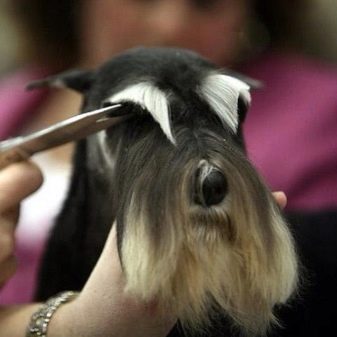

In addition to caring for the coat, you need to monitor the health of your pet's eyes and ears.
To do this, it is recommended to inspect them daily, and if necessary, remove the discharge with a damp disc. Particular attention should be paid to the ears: due to the fact that they are hanging, air exchange in them is difficult. Therefore, to improve ventilation, it is imperative to pluck out the interfering wool. Ear cropping is also allowed. and can be done at the request of the owner.
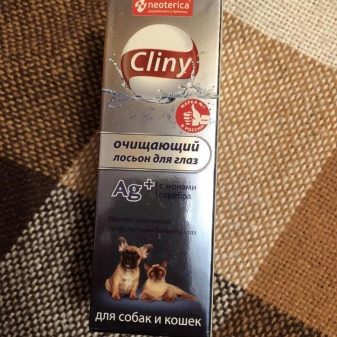
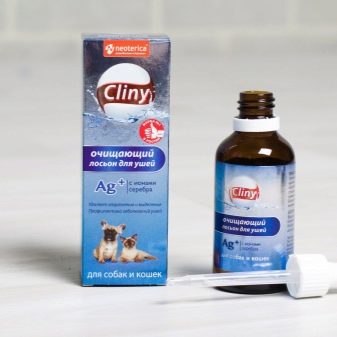
Zwergs' teeth are cleaned as needed when plaque appears, using a dog's toothpaste and a brush attachment on a finger. If not all milk teeth fall out, the pet should be taken to the veterinarian for their removal. Otherwise, they will not allow molars to grow properly, which can provoke the formation of an incorrect bite. The claws of miniature schnauzers are trimmed at home as they grow back, using a nail clipper for this.
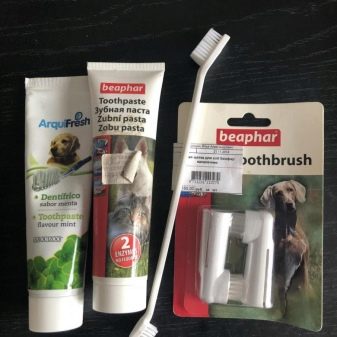
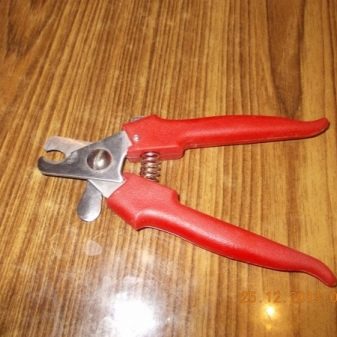
The puppy should be taught to this procedure as early as possible, so that the animal subsequently responds adequately to it and does not break out.
What to feed?
Feeding Miniature Schnauzers has its own nuances, although in general it is not very different from feeding other dogs. In particular, zwergs should not be overfed, which is due to their predisposition to rapid weight gain, which is clearly visible even with the naked eye.
Fat dogs become inactive, lazy and prone to various diseases. Besides, miniature schnauzers cannot be fed from a common table... This is due to their tendency to allergic skin rashes, which are caused by the use of inappropriate foods.
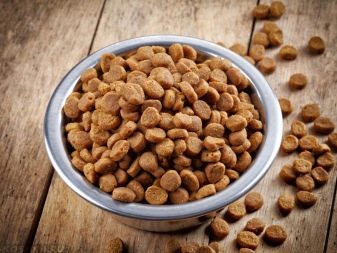
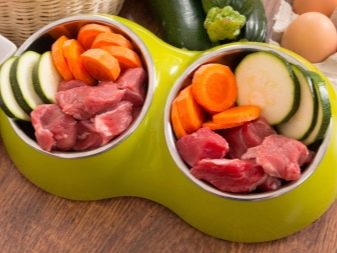
The best food option for miniature schnauzers is premium dry food for active dogs. In such formulations, all the substances necessary for the dog's body are in the right amount and compatible combinations.
If it is decided to feed the zwerg with natural food, then his diet should consist of half of lean meat or offal, and the rest should be in cereals (buckwheat, rice or oatmeal) and vegetables. A couple of times a week, you should give boiled eggs, low-fat cottage cheese, raw chicken necks, kefir and boiled sea fish, pre-peeled.
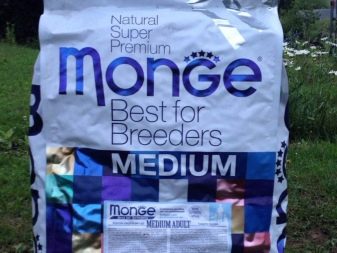
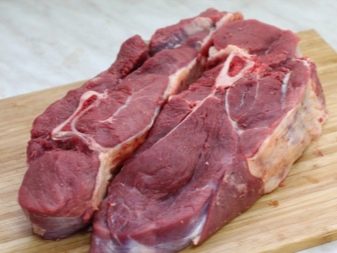
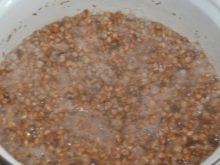

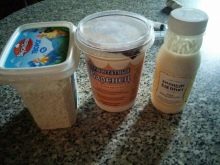
Feeding should be carried out strictly according to the regimen at the same time.
Small puppies up to 4 months of age are fed 5-6 times a day, then transferred to 4 meals a day and by 7-9 months - 3 meals a day. By the year, the zwerg should eat 2 times a day, and the morning portion should be slightly larger than the evening one.

The list of foods prohibited for a miniature schnauzer includes pickles, smoked and fried foods, fatty meats, confectionery sweets, pastries, spicy and salty foods, as well as tubular bones and food with a high content of dyes and artificial additives... Whichever type of food is chosen, the dog should have access to fresh drinking water around the clock.


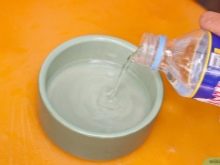
Education and training
It is necessary to bring up a miniature schnauzer from the first day the puppy appears in the house, long before the start of training. First of all, the pet needs to be shown who is the boss and under no circumstances should the baby follow the lead. The dog must immediately clearly understand what is permissible for him and what is not, and if something was prohibited, then the ban must be in effect once and for all., without any kind of exceptions and indulgences.
For example, if a miniature was forbidden to enter the kitchen, then indulgences like "for a minute" or "just one time" should not serve as a reason to lift the ban. Otherwise, the dog will understand that any "not allowed" can be challenged - it will be much more difficult to call it to order later.
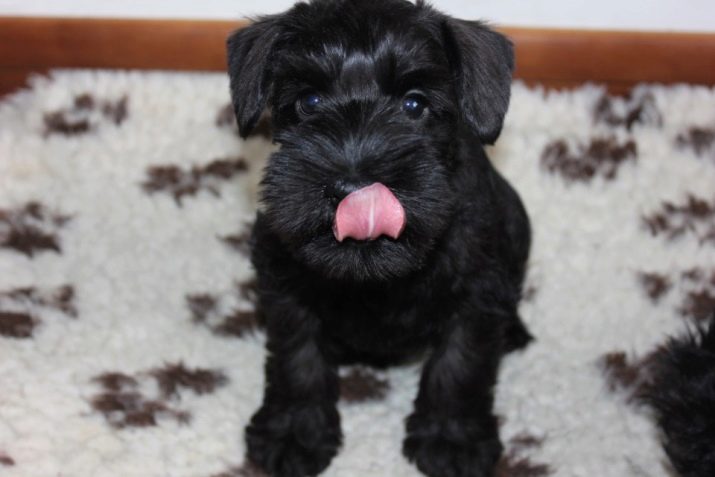
The main thing is to become a leader and a leader for the little zwerg at this stage, then it will be much easier to educate him.
The training of a miniature schnauzer should be started at the age of 4 months, using an element of the game for this. The easiest exercise will be to load a toy or a ball, as puppies love to run after small moving objects. It should be remembered that you cannot beat a pet for non-execution of commands. Zwerg perfectly understands the intonation of a human voice, so a strict tone will be enough for him.
More serious workouts are usually started at 6 months., since by this time the dog's nervous system was practically formed, it very easily remembers unfamiliar words and consciously executes commands.

The animal should be trained patiently and methodically, in no case being touched by the puppy's tricks in the classroom. In case of disobedience or the manifestation of aggression, the pet should be stopped with a loud shout, and the more dull ones should be shaken by the scruff of the neck. It should be borne in mind that, by their nature, the miniatures are very cunning and resourceful and often use various tricks to shirk the execution of commands.
In such cases, the owner needs to be persistent and return the pet to classes.
These dogs have excellent memory, so they quickly remember what to do and what not. In general, training is carried out according to the classical scheme using a system of rewards and punishments. Zwerg works well in a group, so the owner can enroll him in a general training course, where an experienced dog handler will help socialize the dog, remove excessive zoo-aggression and teach commands.
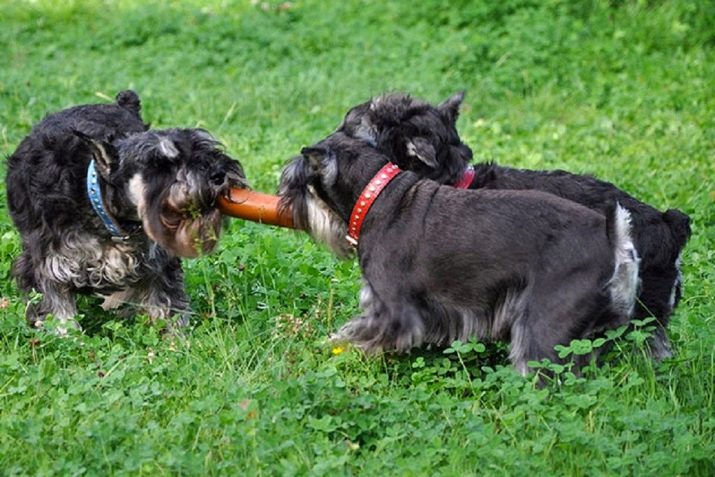
List of nicknames
The choice of a name for a pet is a creative and rather responsible business, and it is sometimes very difficult for an owner to choose one from a huge number of nicknames. When buying a puppy in a kennel, the task is much easier, since the baby already has its own name, made up taking into account the eminent ancestors on both lines, their regalia and the name of the kennel. Then this long name is shortened by the owners to a short but sonorous home name, to which the puppy is taught.
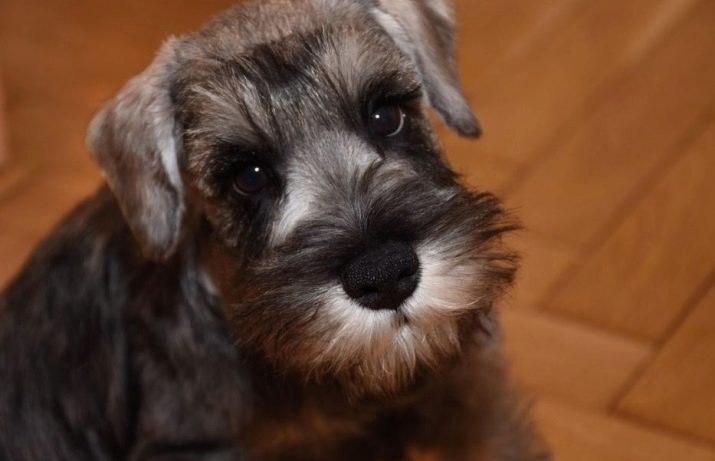
Sometimes breeders offer only the first letter of the name and the owner of the dog has the right to come up with a nickname for the puppy himself.
For such cases, you can use the list of common names for girls and boys that are most suitable for miniature schnauzers. So, the dog can be called Arbat, Armand, Axel, Alex, Brooks, Bruno, Biscay, West, Veles, Vista, Gray, Thunder, Dark, Dixie, Erik, Zhigan, Zorg, Zero, Ikar, Ishim, Irt, Kurt, Leon, Leiden, Mark, Maurice, Neman, Nord, Oscar, Porter, Perez, Roy, Richard, Steve, Stark, Tox, Trisha, Uranus, Fix, Fidel, Horst, Zeiss, Chuck, Chenny, Shaman, Shorokh, Eric, Eridan, Eustace, Jurgen Yagor, Yagrin or Yashka.
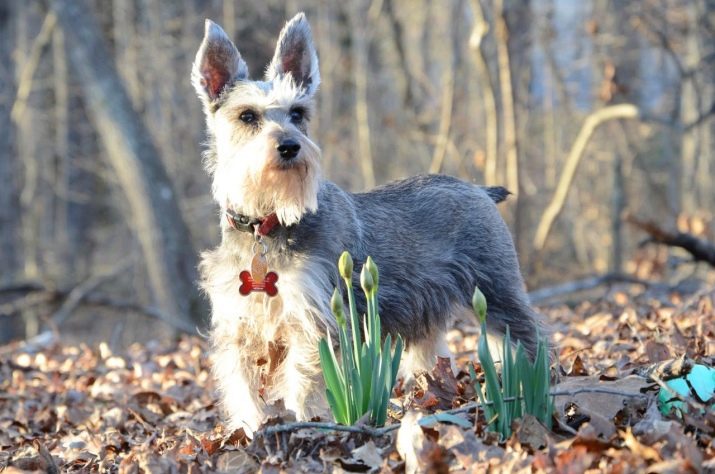
The girl can be called Ayma, Betty, Vista, Gerda, Della, Yeroy, Zhalla, Zeya, Irma, Krama, Linda, Lima, Myra, Neris, Orina, Pinta, Romina, Raina, Sonata, Sega, Tamila, Tori, Ulma, Ursula, Freya, Fanny, Chloe, Hannah, Tsera, Cherry, Charma, Shimoy, Annie, Elfa, Yursi, Yusta, Yara or Yanina.
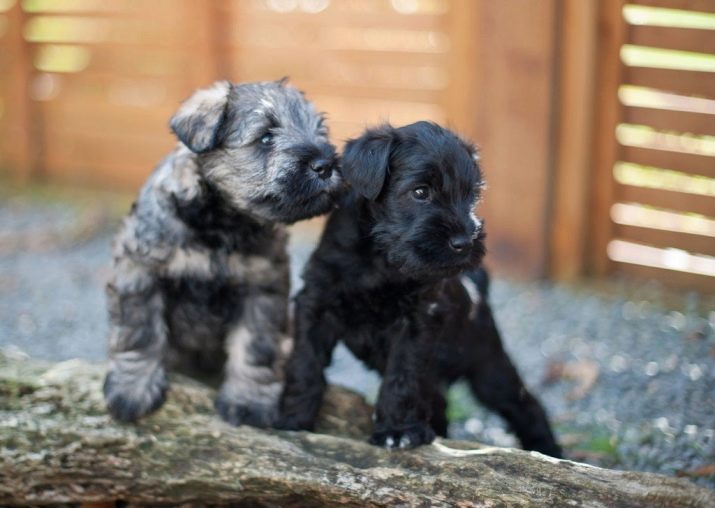
Despite its size, the Miniature Schnauzer is a serious dog, and therefore nicknames like Pukhlikov and Bublikov clearly do not suit him. The dog should have a one- or two-syllable name that is well understood by ear and not in tune with the basic commands. For example, you cannot call a dog Farce, since the animal can easily confuse it with the command "face" and get disoriented in its actions.
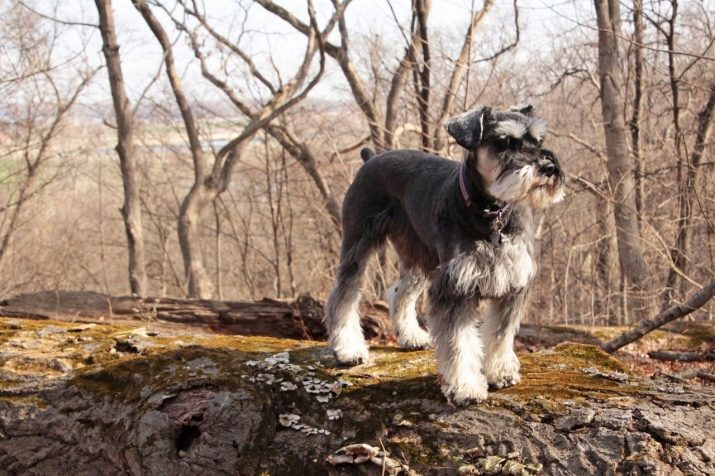
Owner reviews
The owners of miniature schnauzers appreciate their pets very highly and speak of them in an enthusiastic manner. They all agree that the Zwerg is an ideal family dog that finds a common language with literally every member of the household. A pet can entertain the child for days on end, run to feed on the hostess and breastfeed to protect the owner on an evening walk. Moreover, the dog is not prone to unreasonable loud barking, which greatly facilitates the life of neighbors at the entrance.
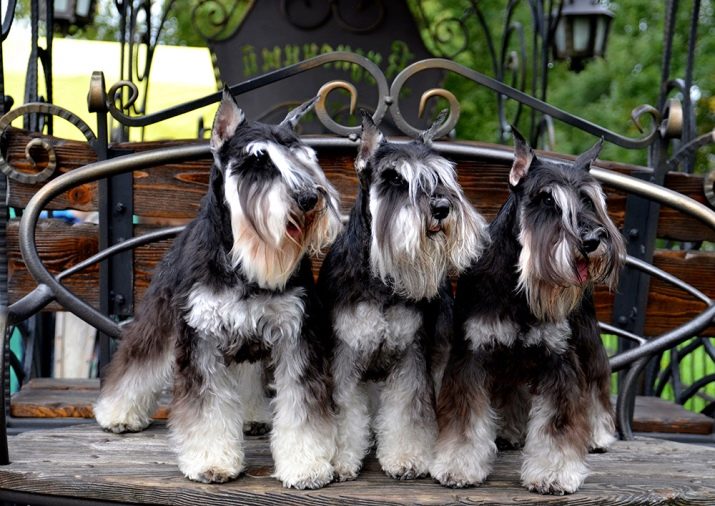
And also it is noted lack of smell and wool in the apartment, sharp mind, intelligence and developed sense of humor of the pet. Attention is also drawn to the fact that the miniatures quickly recognize the situation and begin to act according to the circumstances. For example, an adult zwerg will never start a noisy game if someone is resting in the apartment.
Of the minuses of the breed, the need for trimming and the owner's slippers eaten during the growing up of the pet are noted.
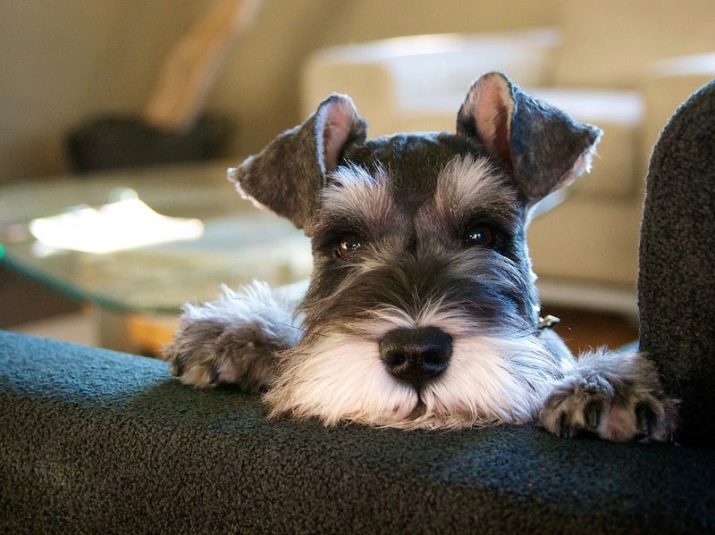
You will learn more information about the breed from the following video.



































